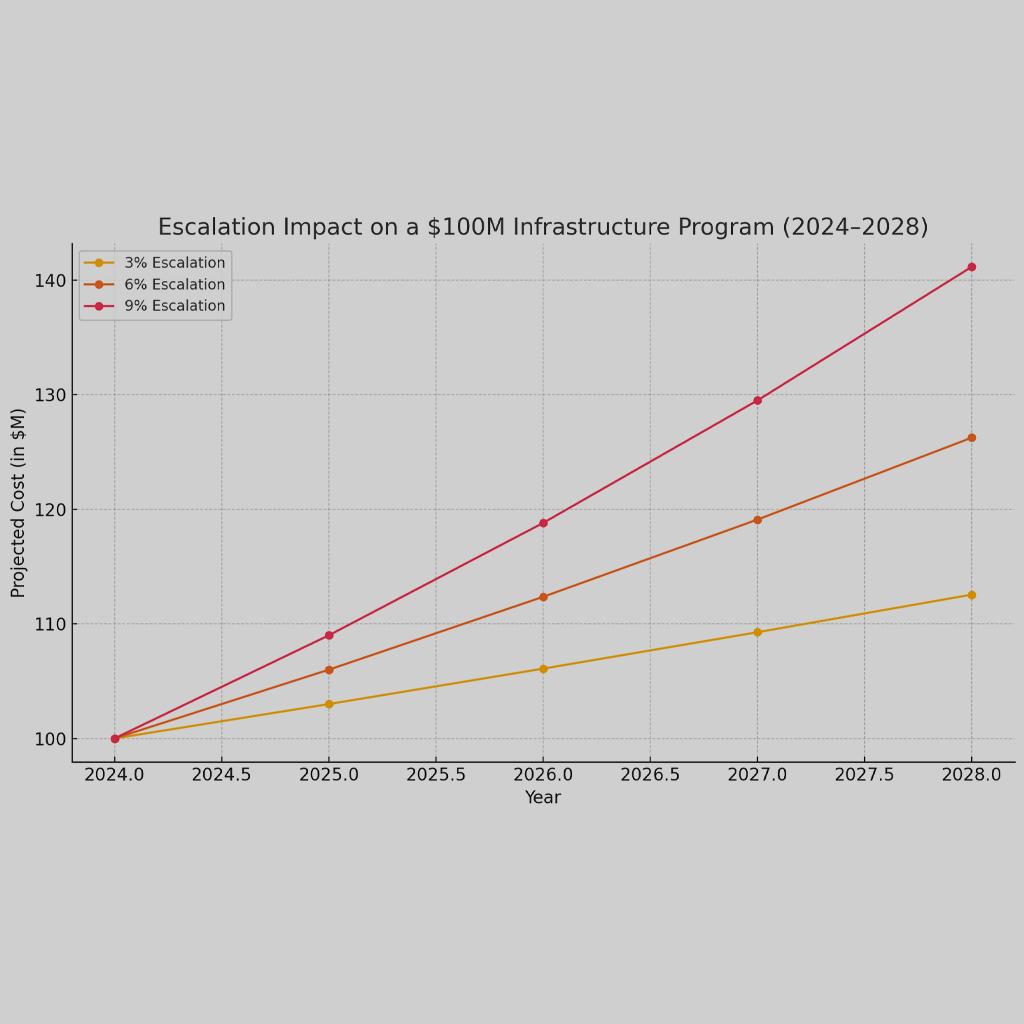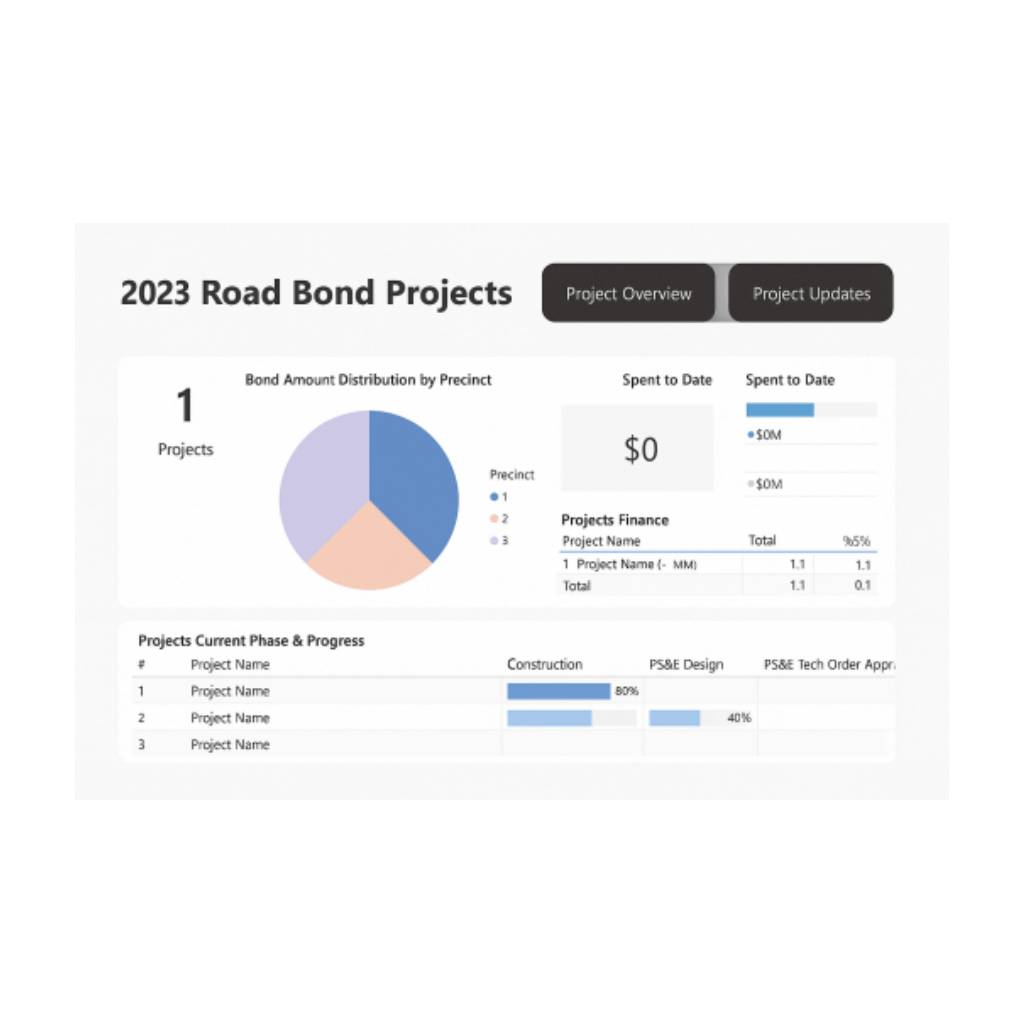The construction industry has long been plagued by inefficiency, lack of transparency, and cost overruns. Capital improvement bond programs, which fund essential public infrastructure projects, have not been immune to these issues. With ever-increasing scrutiny of public spending and a growing demand for high-quality infrastructure, it’s time to rethink construction management for capital improvement bond programs. This article will explore the need for a paradigm shift in construction management and highlight innovative approaches that can lead to more effective bond-funded projects.
The Future of Construction Management in a Challenging Environment
Traditional construction management methods typically follow a linear, top-down approach, where decision-making is centralized and communication is often siloed. This lack of collaboration and information-sharing can lead to inefficient use of resources, miscommunication, and ultimately, project delays.
So, what does the future hold for construction management in this high inflation, rising interest rates, and limited resource environment? It’s all about adaptability, innovation, and sustainability. We need to embrace new ways of thinking and working to overcome the obstacles we’re facing.
By reevaluating traditional construction management practices and exploring alternative methods, we can ensure that capital improvement bond programs continue to provide essential infrastructure and improvements for our communities. Let’s rise to the challenge and build a better future together.
The Critical Role of Program-Level Controls
In today’s challenging economic landscape, program-level controls have become more critical than ever for capital improvement bond programs. Implementing these controls can help construction management teams ensure that projects are completed on time, within budget, and meet quality standards. By establishing a robust and systematic approach to program control, organizations can better manage risks, optimize resources, and achieve better project outcomes.
Enhanced Monitoring and Reporting
One key aspect of program-level controls is enhanced monitoring and reporting. This involves collecting, analyzing, and reporting data on project performance, enabling construction management teams to make informed decisions and adjust strategies as needed. By continually tracking progress and evaluating project health, teams can identify potential issues early on and take corrective action to mitigate risks.
Regular and transparent communication among stakeholders is also vital. Sharing project updates, performance metrics, and potential challenges ensures that everyone involved has a clear understanding of the program’s status and can collaborate effectively in addressing any emerging concerns.
Standardized Processes and Procedures
Implementing standardized processes and procedures across capital improvement bond programs can help improve efficiency and consistency. By establishing best practices and guidelines, construction management teams can ensure that projects are executed following a proven approach, reducing the likelihood of costly errors or delays.
These standardized processes should encompass all aspects of the program, from planning and design to procurement, construction, and commissioning. They should also be flexible enough to adapt to the unique needs and circumstances of each project within the program.
Integrated Program Management Systems
Leveraging integrated program management systems is another crucial component of program-level controls. These systems help construction management teams centralize and streamline program information, facilitating better decision-making and more efficient project management.
Integrated program management systems should be capable of tracking project schedules, budgets, and resources, as well as providing real-time updates on performance metrics. By consolidating program data in one central platform, construction management teams can more easily identify trends, spot potential issues, and make data-driven decisions.
Cross-Functional Collaboration
Finally, fostering cross-functional collaboration is essential for effective program-level controls. As capital improvement bond programs often involve multiple projects and stakeholders, it’s crucial that everyone involved works together effectively to achieve common goals.
Establishing cross-functional teams that include representatives from all relevant disciplines – such as planning, design, engineering, procurement, and construction – can help ensure that all perspectives are considered and that decisions are made in the best interest of the overall program. This collaborative approach can lead to better project outcomes, as well as stronger relationships among stakeholders.
In summary, program-level controls play a crucial role in managing capital improvement bond programs in today’s high inflation, rising interest rates, and limited resource environment. By focusing on enhanced monitoring and reporting, standardized processes, integrated program management systems, and cross-functional collaboration, construction management teams can better navigate these challenges and deliver successful projects for their communities.
Lean Construction Principles
Another approach that can help construction management teams navigate today’s challenging environment is the adoption of lean construction principles. These principles focus on maximizing value and minimizing waste throughout the construction process. By identifying and eliminating inefficiencies, construction teams can reduce costs and better manage limited resources.
Lean construction principles encourage continuous improvement and a strong focus on customer value. Through iterative planning, construction management teams can stay responsive to changing project needs and make better-informed decisions. This can ultimately lead to more efficient, high-quality capital improvement projects.
The Importance of Risk Management
With the current high inflation, rising interest rates, and limited resource environment, effective risk management is essential for construction management teams. Identifying potential risks early on and developing mitigation strategies can help prevent costly delays and disruptions in the construction process.
Comprehensive risk assessments should be conducted throughout the project lifecycle, with construction management teams continually monitoring and updating risk profiles. By staying vigilant and proactive in addressing potential challenges, construction teams can keep capital improvement bond programs on track and within budget, despite the difficult circumstances.
Emphasizing Workforce Development and Retention
Finally, it’s crucial to recognize the importance of workforce development and retention in the construction industry. With many skilled workers retiring and a growing skills gap, construction management teams must prioritize training and development to ensure a capable workforce is available for capital improvement bond programs.
Investing in training programs, apprenticeships, and mentorships can help attract and retain skilled workers in the industry. A strong emphasis on worker safety and well-being, as well as creating inclusive and diverse work environments, can also contribute to a more robust and reliable workforce.
Conclusion
In summary, program-level controls play a crucial role in managing capital improvement bond programs in today’s high inflation, rising interest rates, and limited resource environment. By focusing on enhanced monitoring and reporting, standardized processes, integrated program management systems, and cross-functional collaboration, construction management teams can better navigate these challenges and deliver successful projects for their communities.













